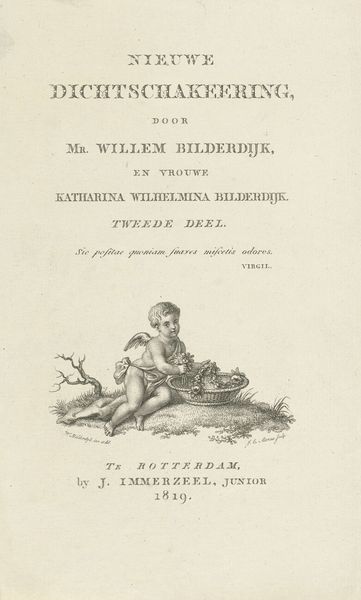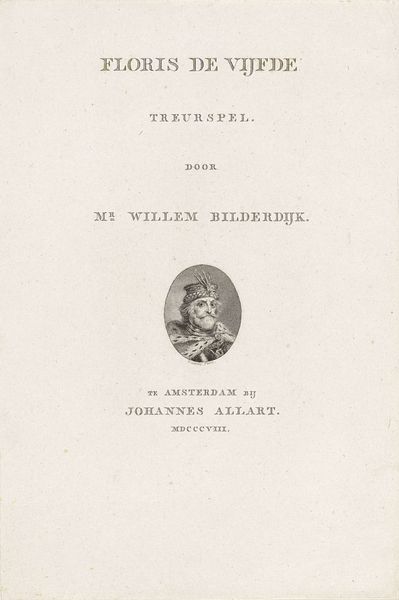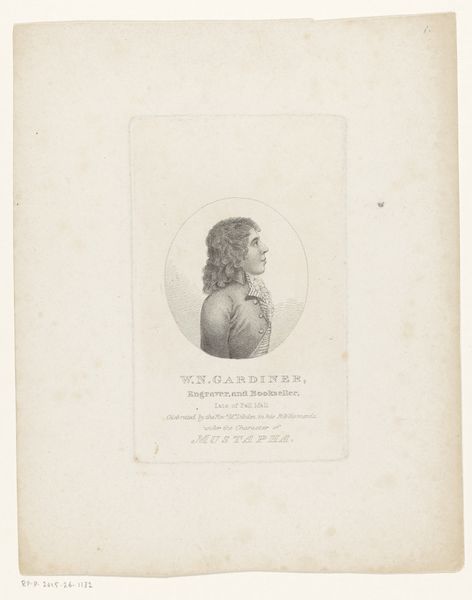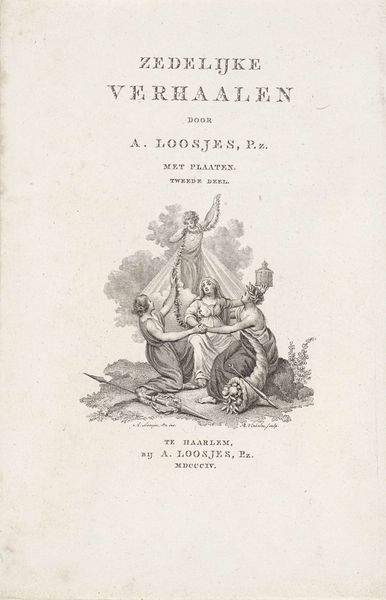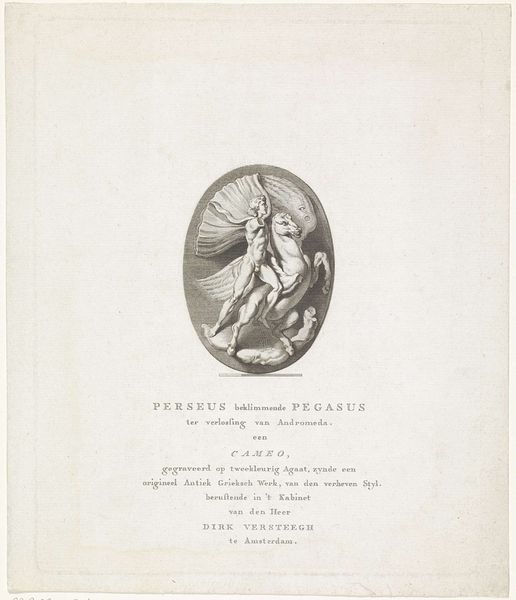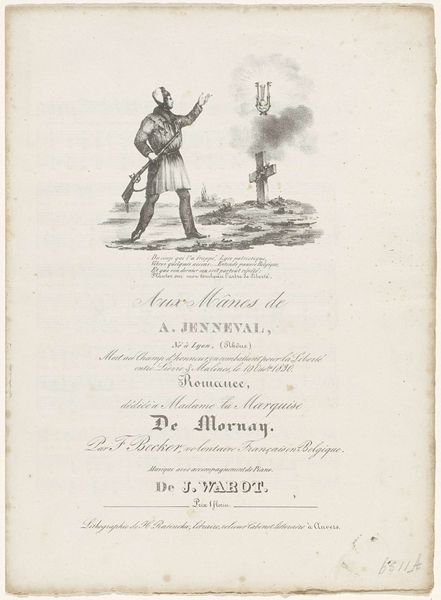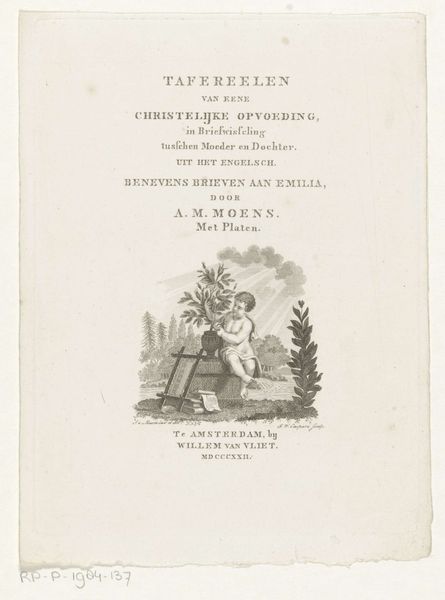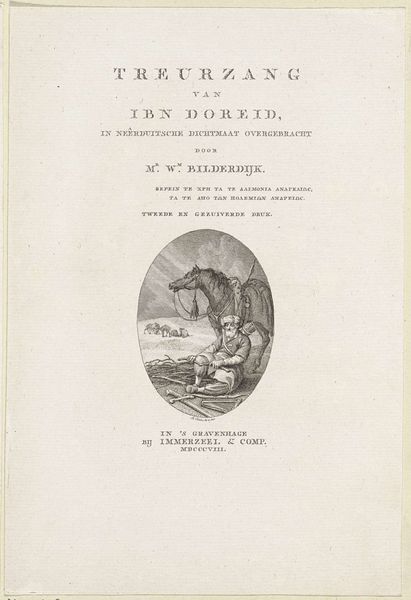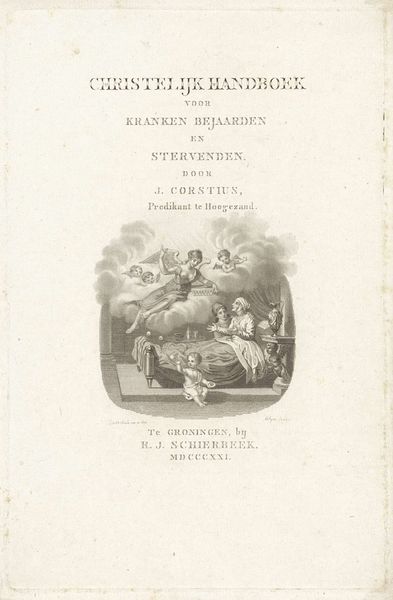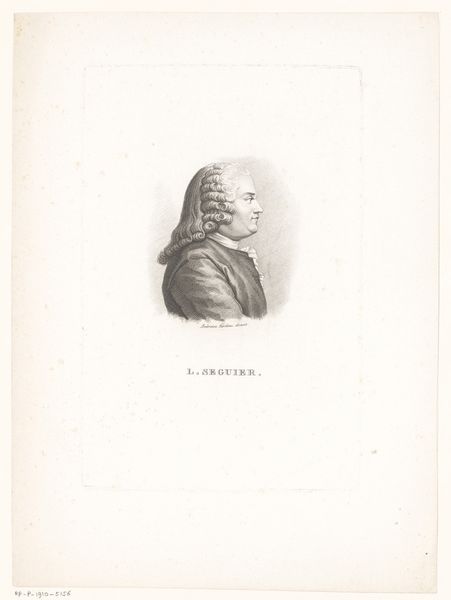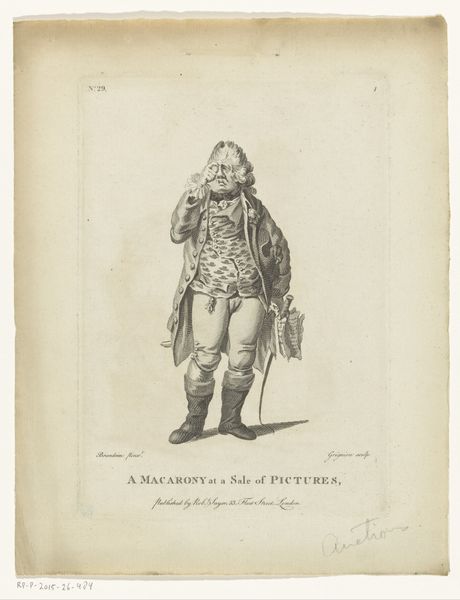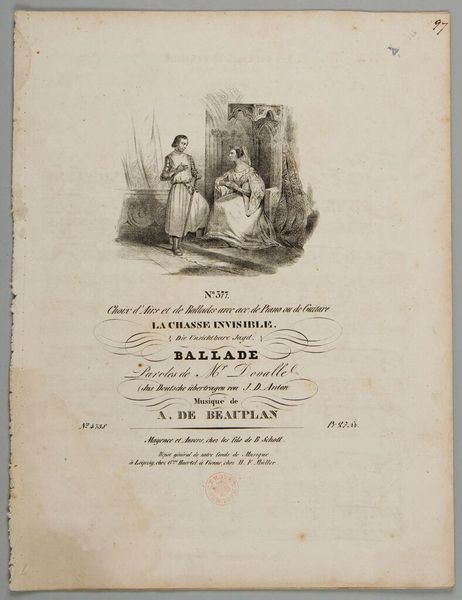
Titelpagina voor: W. Bilderdijk, Zedelijke Gispingen, Rotterdam 1820 1820
0:00
0:00
graphic-art, print, engraving
#
graphic-art
#
allegory
# print
#
figuration
#
romanticism
#
engraving
Dimensions: height 225 mm, width 138 mm
Copyright: Rijks Museum: Open Domain
Curator: My first impression is...unease. It's the figure's burdened stance and that oversized mask that creates this unsettling mood. Editor: Here we have Johannes Christiaan Bendorp's title page for W. Bilderdijk's "Zedelijke Gispingen," Rotterdam, 1820. It is an engraving. Bendorp gives us a lens to view Bilderdijk through the Romantic lens that really challenged Enlightenment thinking. Curator: I see that. This figure seems weighed down not only by the literal mask—that disembodied head it’s struggling to carry—but by something more metaphorical, like the burden of authority or perhaps tradition? What can you tell me about the physical elements that suggest such concepts? Editor: Certainly. The engraving as a print is accessible, reproducible; its materiality democratizes knowledge. The stark contrast in light and shadow, characteristic of the romantic style, emphasizes the tension within. Think of the figure; this allegorical figure isn't grounded or celebrated. Instead, there's strain, visible labor. Curator: That is such an intriguing point, this tension! It speaks volumes. I'm also reading a kind of post-colonial anxiety here – this small, childlike figure almost crushed by a patriarchal European symbol of intellect and moral authority, that feels like an ongoing global power dynamic. The image appears to reflect a commentary on authority, privilege, and how they become inherited burdens for coming generations. Editor: Indeed. And we see that the artist is not using precious metal. There's a deliberate connection to the craft and labor inherent in production. The artist isn't afraid to address the more difficult social conditions of art making or of societal structure. Curator: I see what you mean. There's no gilding of the reality; a focus on craft foregrounds these tangible elements of production, underscoring the relationship to wider questions of labor. The very act of printing allows greater availability. Editor: Viewing art with an eye to process allows for understanding its production to highlight political economy and how art shapes and is shaped by the labor of humans. Curator: So, both the literal image, in representing the burden of knowledge and authority, and the print as an affordable medium available to many levels of people, offer avenues for analyzing themes like responsibility, accessibility, and power within art and culture. It really causes one to reflect. Editor: Yes. Ultimately, by engaging in this way with these prints and thinking deeply about how they came to be made, it opens the path for challenging norms in understanding both labor and society.
Comments
No comments
Be the first to comment and join the conversation on the ultimate creative platform.
